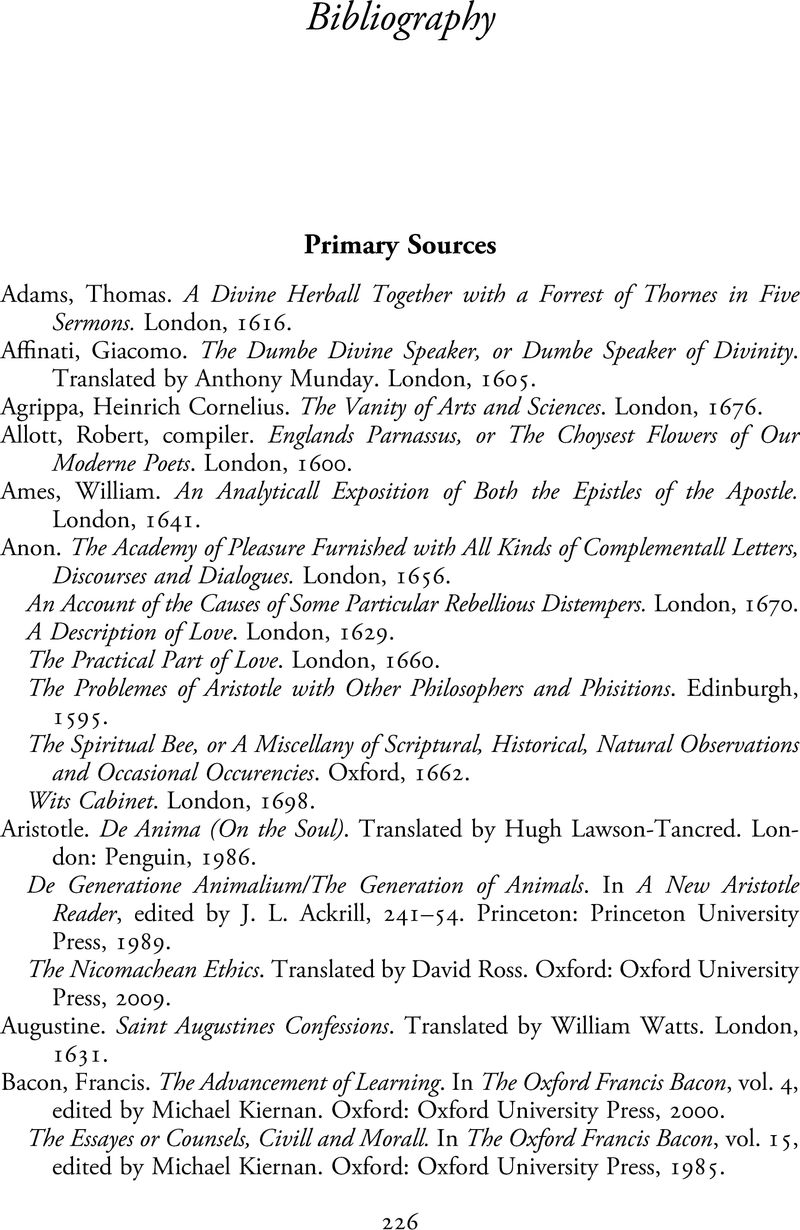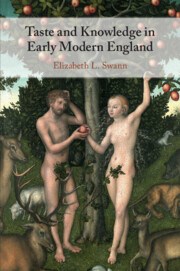Book contents
- Taste and Knowledge in Early Modern England
- Taste and Knowledge in Early Modern England
- Copyright page
- Dedication
- Contents
- Figures
- Acknowledgements
- Note on the Text
- Introduction
- Chapter 1 ‘To dream to eat Books’
- Chapter 2 Anatomizing Taste
- Chapter 3 From Eve’s Apple to the Bread of Life
- Chapter 4 ‘Those Fruits of Natural knowledge’
- Chapter 5 ‘Honey secrets’
- Afterword
- Bibliography
- Index
- References
Bibliography
Published online by Cambridge University Press: 08 October 2020
- Taste and Knowledge in Early Modern England
- Taste and Knowledge in Early Modern England
- Copyright page
- Dedication
- Contents
- Figures
- Acknowledgements
- Note on the Text
- Introduction
- Chapter 1 ‘To dream to eat Books’
- Chapter 2 Anatomizing Taste
- Chapter 3 From Eve’s Apple to the Bread of Life
- Chapter 4 ‘Those Fruits of Natural knowledge’
- Chapter 5 ‘Honey secrets’
- Afterword
- Bibliography
- Index
- References
Summary

- Type
- Chapter
- Information
- Taste and Knowledge in Early Modern England , pp. 226 - 255Publisher: Cambridge University PressPrint publication year: 2020



